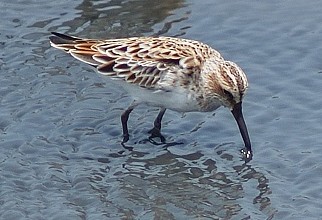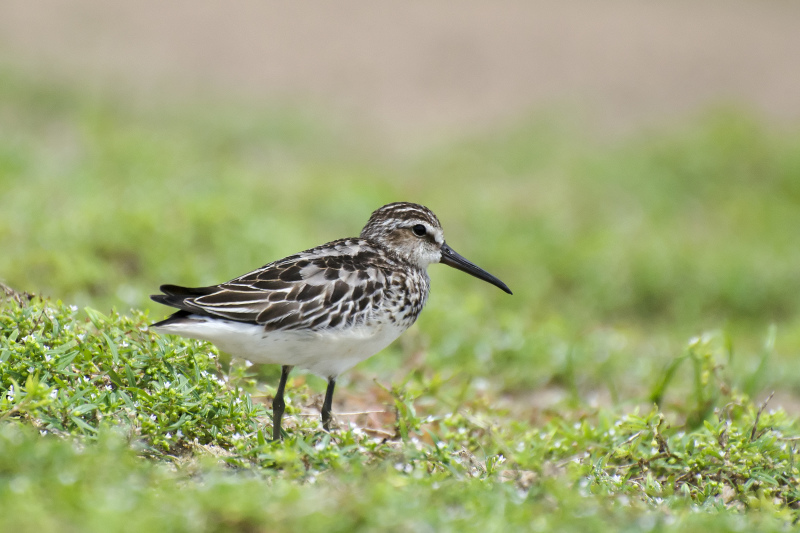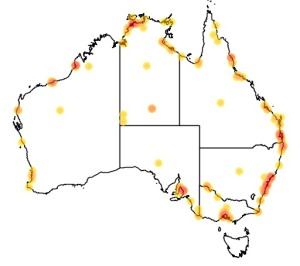Colours
Distinguishing features
They are small waders, slightly smaller than the Dunlin, but with a longer straighter bill, and shorter legs. The breeding adult has patterned dark grey upperparts and white underparts with blackish markings on the breast. It has a pale crown stripe and supercilia.
In the boreal winter, they are pale grey above and white below, like a winter Dunlin, but retaining the head pattern. Juveniles have backs similar to young Dunlin, but the white flanks and belly and brown-streaked breast are distinctive. (Wikipedia)
Size
- From 16 cm to 19 cm (Length of specimen)
Wingspan
- From 34 cm to 37 cm
Synonyms
Distribution
Distribution and habitat preferences
It is strongly migratory, spending the non-breeding season from easternmost Africa, through south and south-east Asia to Australasia. It is highly gregarious, and will form flocks with other calidrid waders.
Despite its European breeding range, this species is rare on passage in western Europe, presumably because of the south-easterly migration route.
This bird's breeding habitat is wet taiga bogs in Arctic northern Europe and Siberia. (Wikipedia)
Diet
They forage in soft mud on marshes and the coast, mainly picking up food by sight. They mostly eat insects and other small invertebrates. (Wikipedia)
Web resources
References
- Simpson, K., N. Day and P. Trusler (2004). Field Guide to Birds of Australia: 7th Edition Penguin Group (Australia), Camberwell, Victoria.






